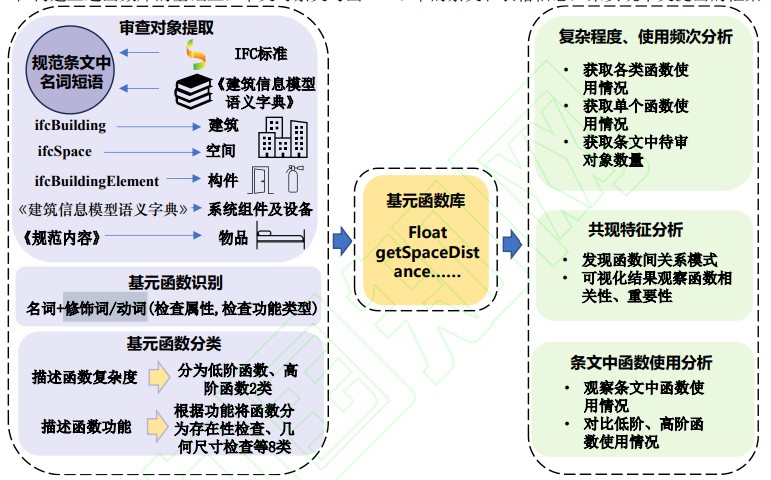Automatic Function Extraction and Analysis for Interpreting Complex Rules from Building Codes
Engineering Mechanics, 2024
Recommended citation: Lu, J.Z., Cao, X.Y., Zheng, Z., Lu, X.Z., Lin, J.R.* (2024). Automatic Function Extraction and Analysis for Interpreting Complex Rules from Building Codes. Engineering Mechanics, xx(x), xx-xx. doi: 10.6052/j.issn.1000-4750.2023.11.0850 (online first) https://link.cnki.net/urlid/11.2595.O3.20240321.1458.008
Abstract
Automated rule checking (ARC) is revolutionizing in various domains, while its key stage, rule interpretation, still remains a bottleneck. Currently, the process relies heavily on domain experts, making it both time-consuming and labor-intensive. This challenge arises due to the complex computational logics and hidden domain knowledge embedded within the rules. These complexities are compounded by the computer’s inability to inherently understand complex design rules, given its lack of basic common sense and logical rules. Therefore, our study takes the key contents of “Building Design Fire Code” as an example, and through systematically organizing, analyzing, and disassembling the relevant rules, the concept of “atomic function” is firstly proposed. This concept aims to characterize the basic algorithmic units shared by different rules when it comes to rule reasoning and logical computation. Then, for the analysis of complex rules, the method to identify and to extract relevant atomic functions is established. As a result, we have identified 66 atomic functions, and further categorized them into 8 groups for the checking of existence, of quantity, of geometry, of distance, of area, of spatial location, of window-wall ratio, and of property, respectively, thereby forming the first atomic function database for the checking of Chinese building design codes. We scrutinize the complexity, utilization frequency, co-occurrence patterns, and complex logic representation capabilities of the checking objects and atomic functions, and the results demonstrate: Atomic functions’ usage showcases a long-tailed distribution; Property functions frequently co-occur with other function types; The atomic functions established have a strong capacity for representing complex logics, which can greatly improve the interpretation scope and reasoning ability of complex design rules.

The authors are grateful for the financial support received from the National Natural Science Foundation of China (No. 72091512, No. 52378306, No. 51978596).

Leave a Comment